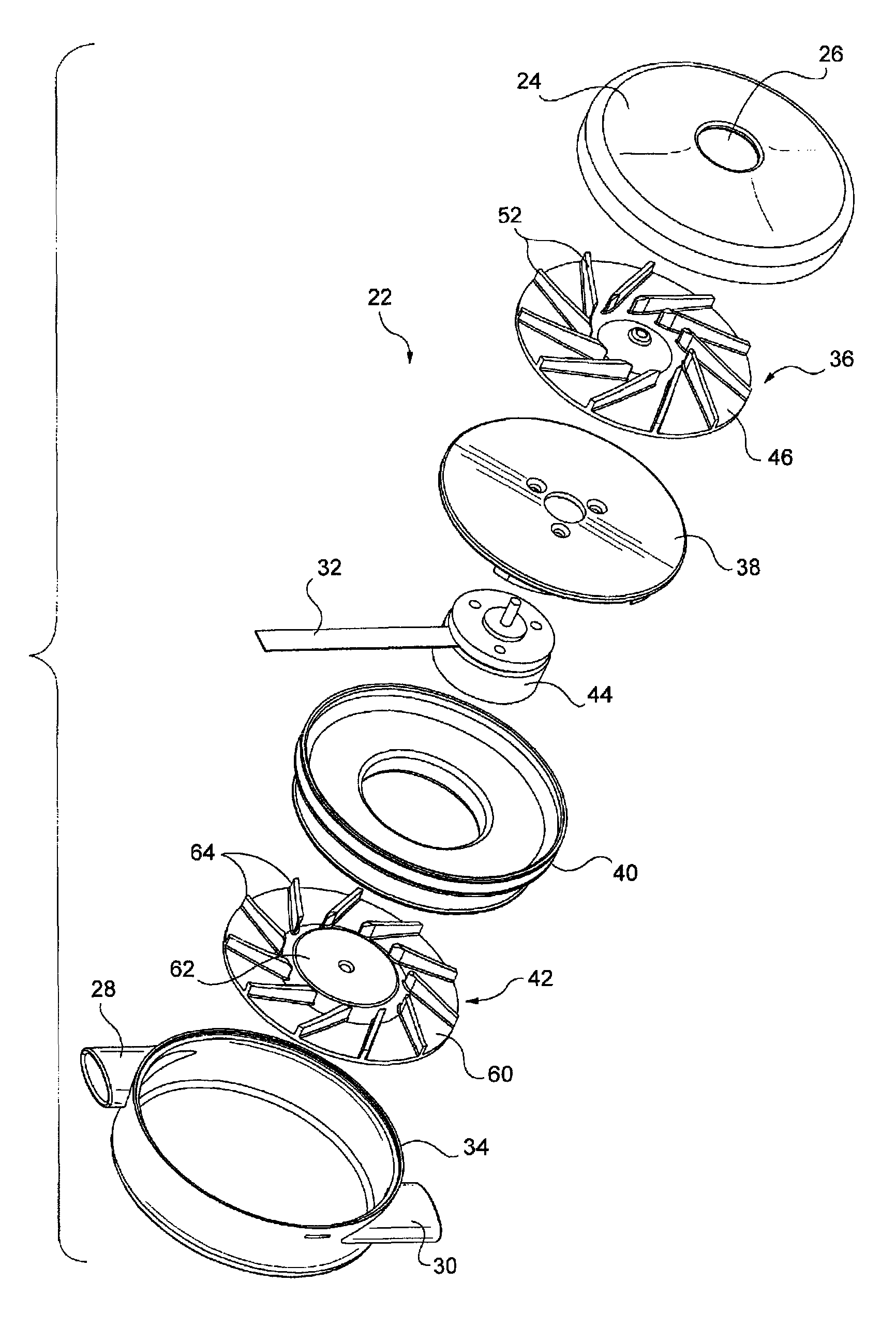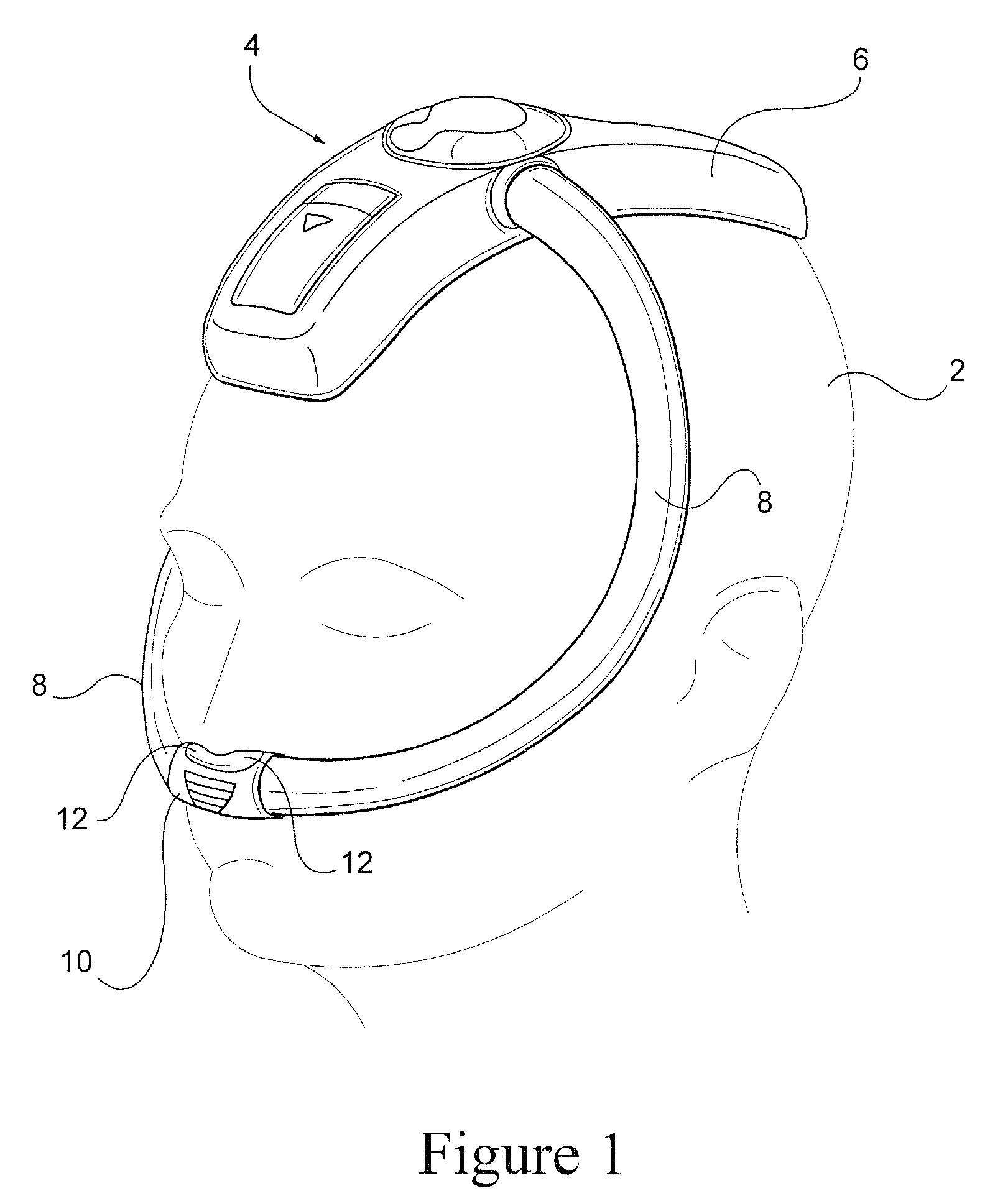Respiratory apparatus
a technology of respiratory apparatus and stent, which is applied in the direction of valve operating means/release devices, machines/engines, liquid fuel engines, etc., can solve the problems of affecting the quality of patient's sleep, so as to enhance the treatment delivery
- Summary
- Abstract
- Description
- Claims
- Application Information
AI Technical Summary
Benefits of technology
Problems solved by technology
Method used
Image
Examples
first embodiment
Respiratory Apparatus First Embodiment
[0041]Referring to FIG. 1, a respiratory apparatus for delivering a flow of pressurized breathable gas to a patient 2, for example to treat SBD, such as OSA, comprises a flow generator 4 to generate the flow of pressurized breathable gas. The flow generator 4 is contained in a flow generator housing or casing 6 that is anthropometrically configured to engage the head of the patient 2. As shown in FIG. 1, the flow generator housing 6 is configured to engage the top of the patient's head to permit the patient to sleep on the patient's side without disturbing the positioning of the flow generator housing 6. As shown in FIG. 1, the flow generator housing may have a curvature in the back to front direction of the housing, and a curvature in a lateral direction, i.e. in a direction from one side of the patient's head to the other side.
[0042]The flow generator 4 delivers a flow of pressurized breathable gas through delivery tubes or conduits 8 which ar...
second embodiment
Respiratory Apparatus Second Embodiment
[0044]Referring to FIG. 2, a respiratory apparatus according to another sample embodiment includes strap attachment portions 14 provided on the delivery conduits 8. A strap, or headgear system, may be connected to the strap attachment portions to provide additional securement of the respiratory apparatus to the head of the patient. As shown in FIG. 2, the flow generator housing 6 may be configured to extend towards the back of the head of the patient 2, but may not extend as far forward on the head of the patient 2 as the flow generator housing 6 of the sample embodiment of FIG. 1.
[0045]Referring to FIG. 3, the flow generator housing 6 may be configured to support a voltage regulator 16, a motor controller 18 and a power source 20. The power source 20 may comprise a battery, or a plurality of batteries. For example, the battery or batteries may be configured as lithium polymer batteries having a volumetric energy density of about 250-530 Wh / L, ...
third embodiment
Respiratory Apparatus Third Embodiment
[0062]Referring to FIG. 16, a respiratory apparatus according to another sample embodiment comprises a flow generator 4 provided in a flow generator housing 6 configured to engage the head of the patient, for example the crown of the patient's head. The flow generator 4 is configured to deliver a flow of pressurized breathable gas to delivery conduits 8 which are configured to extend from the flow generator along the sides of the face of the patient to a patient interface 10. The patient interface may include nasal pillows or prongs, a nasal mask, a full face mask, or cannulae.
[0063]Power is provided to the flow generator 4 by a power supply and controller 66 that is connected to the flow generator 4 by an electrical connector 68, for example a cable. The power supply / controller 66 may be configured to be docked in a battery charger, or may include an attachment that allows for charging of the power supply and controller from a voltage source, f...
PUM
 Login to View More
Login to View More Abstract
Description
Claims
Application Information
 Login to View More
Login to View More - R&D
- Intellectual Property
- Life Sciences
- Materials
- Tech Scout
- Unparalleled Data Quality
- Higher Quality Content
- 60% Fewer Hallucinations
Browse by: Latest US Patents, China's latest patents, Technical Efficacy Thesaurus, Application Domain, Technology Topic, Popular Technical Reports.
© 2025 PatSnap. All rights reserved.Legal|Privacy policy|Modern Slavery Act Transparency Statement|Sitemap|About US| Contact US: help@patsnap.com



